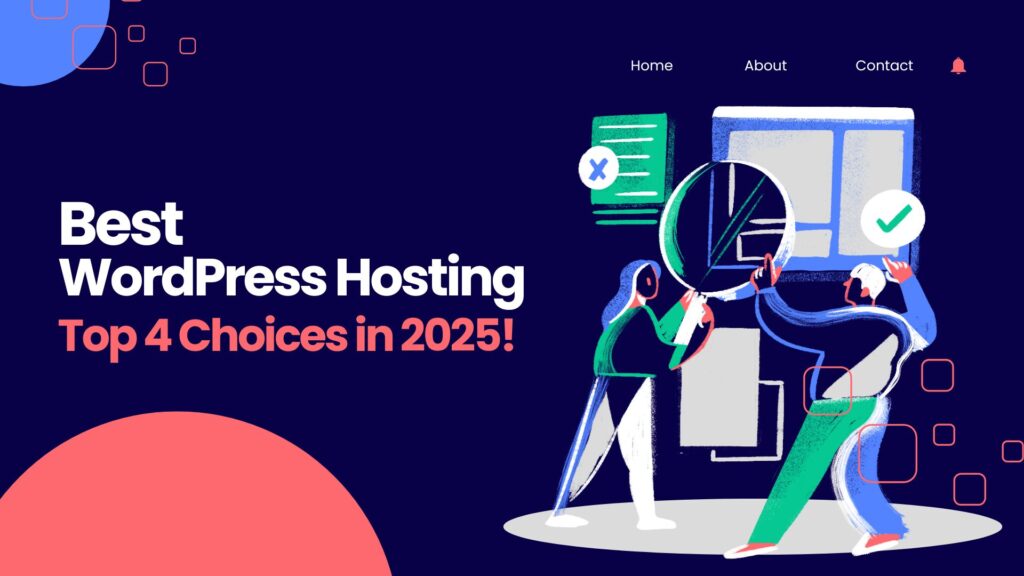If you’re involved in the WordPress ecosystem, whether as a developer, designer, marketer, or freelancer, understanding how to create and sell Website maintenance plans is essential. These plans not only provide ongoing support to your clients but also create a reliable revenue stream for your business. In this blog post, we will explore various strategies and tips to help you get started with your own maintenance plans, ensuring both you and your clients reap the benefits.
By outlining a comprehensive maintenance package, you can effectively communicate the value of ongoing support to your clients. This is crucial in an industry where many clients may not fully understand the necessity of continuous website care. Let’s dive into the critical steps involved in setting up and selling your Website maintenance plans.
Creating Your Hosting and Maintenance Package
First things first, you need to outline a hosting and maintenance package. This package should detail the services you provide, the pricing structure, and any additional benefits that clients can expect. Consider including a downloadable PDF template to make it easier for potential clients to understand what you offer.
For example, we sell our hosting and maintenance packages together, which includes three hours of service per month. This means that for a base price—let’s say $250 per month—clients not only receive hosting but also access to your expertise for minor tweaks and updates. This approach effectively showcases the value of your service.
Stop Doing Free Work
One important aspect of selling maintenance plans is to establish boundaries. If you’ve already completed a project for a client and they continue to reach out for minor tasks, it’s essential to guide them towards your maintenance package. This will prevent you from doing free work and ensure you are compensated fairly for your time.
For instance, if a client frequently asks for help with small tasks, it’s a good idea to remind them about your hosting and maintenance package. This not only helps you manage your workload but also reinforces the importance of ongoing support.
Choosing the Right Hosting Provider
Another crucial tip is to avoid handling the hosting yourself. Instead, partner with a reputable hosting provider like Kinsta or WP Engine. These platforms offer excellent features such as daily backups, a content delivery network, and 24/7 support, which enhance the service you provide to your clients.
By using a third-party hosting service, you can focus on delivering high-quality maintenance support rather than getting bogged down with server management. Clients are willing to pay a premium for reliable hosting, and by charging them a markup, you can create a sustainable business model.
Offer Free Migrations
When onboarding new clients, consider offering free migrations to your hosting service. If a client is currently hosted with another provider, it’s essential to handle the migration process smoothly. This not only saves time but also minimizes potential issues that could arise from using multiple hosting environments.
Ensure that your clients know that you will take care of the entire migration process, making it a hassle-free experience for them. This will build trust and encourage them to commit to your maintenance package.
Subscription-Based Payments
Another vital aspect of your Website maintenance plans is to set up a subscription-based payment system. This can be achieved through platforms like WooCommerce Subscriptions or Stripe. By doing so, you eliminate the hassle of chasing down payments and ensure a steady cash flow.
Communicate to your clients that all payments will be processed online as part of your company policy. This not only streamlines your operations but also enhances client satisfaction as they don’t have to worry about late payments.
Monthly and Yearly Packages
It’s also beneficial to offer both monthly and yearly packages. This dual option allows clients to choose what suits them best while also potentially boosting your upfront revenue. Many clients may opt for a yearly subscription if they see the value in saving money over time.
When setting up these packages, make sure to clearly outline the benefits and services included in each option, making it easy for clients to make informed decisions.
Focus on Key Clients
When launching your maintenance plans, start by reaching out to your best clients or those with whom you have the strongest relationships. This initial outreach will help you gain confidence and provide you with a success story to share with others. Consider drafting a sample email template to facilitate this communication. Once you secure your first client, it becomes easier to approach others with your offering.
Limit Hosting to Existing Clients
It’s generally advisable to offer your hosting services only to clients whose sites you have previously built. This reduces the risk of complications that can arise from managing unfamiliar sites.
By ensuring that you are familiar with the site structure and needs, you streamline your maintenance process and provide a better service overall.
No Hour Rollovers
In your maintenance packages, make it clear that hours do not roll over. For example, if a client has a plan that includes three hours of service per month and doesn’t use them, those hours will not be available the following month. This policy helps you manage your workflow effectively.
If clients exceed their allotted hours, inform them promptly and apply your hourly rate for the additional work. This transparency helps maintain trust and ensures that you are compensated for your time.
Set Up Before Launching a Site
Ideally, you should introduce your hosting and maintenance package to clients before launching their sites. This proactive approach makes it clear that ongoing support is an integral part of your service.
Encourage clients to opt into your maintenance package before their site goes live, ensuring they understand the value of having reliable support from day one.
Avoid Email Hosting
When offering hosting services, it’s wise to steer clear of email hosting. Recommend that clients use established platforms like Google Workspace or Outlook instead. This allows you to focus on what you do best—website maintenance—without the added complexity of managing email services.
By doing so, you can provide a seamless experience for your clients while avoiding potential issues that may arise from email hosting.
Provide Quality Hosting Solutions
When recommending hosting solutions, ensure that you are not directing clients towards low-quality providers. Instead, focus on reputable services that you can confidently manage and support. This not only enhances client satisfaction but also strengthens your reputation in the industry.
By maintaining high standards for the hosting services you offer, you build trust with your clients and foster long-term relationships.
Create a Comprehensive PDF
Finally, create a detailed PDF of your maintenance and hosting package. This document serves as a handy reference for clients and can be shared during meetings or sent via email to reinforce your offerings.
Having a professional-looking PDF not only enhances your credibility but also provides clients with a clear overview of what they can expect from your service.
Conclusion
Setting up and selling Website maintenance plans can significantly enhance your business model while providing valuable support to your clients. By following these steps, you can create a sustainable revenue stream and foster strong relationships with your clients. Start small, focus on quality, and watch your maintenance package grow.
Frequently Asked Questions About Website Maintenance Plans
How much should I charge for Website maintenance?
Pricing can vary widely based on the services included, but typical rates range from $50 to $400 per month. Ensure that your pricing reflects the value you provide.
What services should I include in my maintenance package?
Common services include updates, backups, security checks, performance optimization, and emergency support. Tailor your offerings based on client needs.
How do I communicate the value of maintenance plans to clients?
Share statistics, success stories, and before-and-after examples of your work. Highlight how ongoing maintenance saves time and prevents larger issues.
How often should I review and update my maintenance packages?
Regularly assess your offerings based on client feedback and industry trends. Make adjustments to ensure you remain competitive and relevant.
What are the benefits of offering a maintenance plan?
Maintenance plans provide a steady income stream, foster client loyalty, and allow you to focus on delivering high-quality service without the constant pressure of acquiring new clients.

